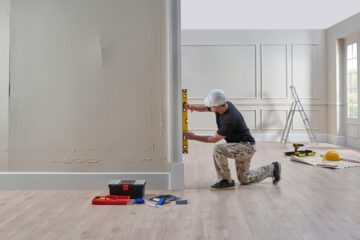The Home Improvement Cast Reunions: Every Time They Got Back Together
Introduction — Why the Reunions Matter
Home Improvement shaped TV in the 1990s. The show gave viewers laughs, family moments, and a familiar backyard for a decade. Its mix of slapstick, heart, and real-life family tension drew millions each week. The cast felt like family to viewers. So, every time the cast reunited it felt like a holiday for fans.
Reunions matter because they let us check on people we loved on screen. They let us remember the jokes and the chemistry. They let actors reflect on what worked and what did not. Those show how time changes people and how much a show can shape careers. They also test whether the old magic still lives.

This post lists every time the core cast got together. It explains what happened. Its share quotes and memories when possible. It looks at why some reunions never happened. And it reflects on what those reunions mean now.
A quick guide to the main cast
Before we dive into reunions, let’s name the people fans most want to see:
- Tim Allen — Tim “Tim Taylor” Taylor. He led the show. He played the joking, tool-loving dad who hosted a home-improvement TV show inside the sitcom.
- Patricia Richardson — She played Jill Taylor, Tim’s wise and grounded wife.
- Richard Karn — He played Al Borland, Tim’s loyal co-host and foil on the fictional show “Tool Time.”
- Jonathan Taylor Thomas — He played Randy Taylor, the handsome, thoughtful middle son who left the show early to focus on school.
- Zachery Ty Bryan — He played Brad Taylor, the oldest son. He delivered many comic moments.
- Taran Noah Smith — He played Mark Taylor, the youngest son who grew up on the show.
- Debbe Dunning — She played Heidi Keppert, the Tool Time assistant in later seasons.
- Earl Hindman — He played the Taylor next-door neighbor Wilson, famous for showing only part of his face. He passed away after the show ended.
- Other recurring players — The show had many guest stars and recurring characters. They joined the cast at different times and sometimes appear at reunions.
The 2003 Retrospective Special — A Formal Look Back
One of the earliest major gatherings happened when the show’s legacy still felt fresh. The producers and cast agreed to do a special retrospective. The special looked back at the show’s run. It showed clips. Its offered interviews. It let cast members talk honestly about life on the show.
Why this mattered: the special gave fans a look behind the curtain. It reminded viewers why the show worked. The cast spoke about the rhythm they developed. They told stories about shoots, mistakes, and favorite bits. Tim Allen took the lead in the special. Other core cast members joined him on stage or on camera. The special honored the show and the fans. For viewers it felt like a gentle reunion.
What stood out: cast members talked like friends. They laughed at the same old jokes. They reflected on the show’s fans and the craft behind the laughs. For many viewers the special became the first formal opportunity to see the cast together since the finale.
The 2011 Entertainment Weekly Photo Shoot — Big Faces, Big Feelings
Probably the most-publicized reunion for many years came in 2011. Entertainment Weekly arranged a photo shoot and short reunion for the magazine. The gathering aimed to bring the main cast into the same room and show them to fans again. The photos ran in the magazine and online. The shoot let fans see how time had changed them and how their bond remained.
Why this mattered: it brought Jonathan Taylor Thomas back into the fold in a public way. He had largely retreated from Hollywood and public life, so his appearance surprised and delighted many fans. The shoot also reunited Tim Allen, Patricia Richardson, Richard Karn, and other familiar faces.
What happened at the shoot: the cast spent time taking photos. They talked about the show. People who watched the videos and read the interviews noticed two things. First, the cast still had easy chemistry. Second, they had different lives now. They were parents, creators, and professionals in different fields. Fans loved seeing the laugh lines. They loved seeing the genuine smiles.
Fan reaction: fans flooded social media and message boards with nostalgia. The shoot triggered long threads about favorite episodes and lines. Fans posted side-by-side photos of their younger and older selves. The reunion turned into a moment of shared remembrance.
Scattered Appearances, Panels, and Interviews — Smaller Reunions
Not all reunions were big photo shoots or TV specials. Several smaller meetings happened over the years. These included talk show appearances, award-panel reunions, and behind-the-scenes gatherings for charity or private events. Fans often learn about these through interviews, magazine features, or social posts.
Examples of small reunions:
- Talk show appearances where two or three cast members sat together to talk about specific episodes.
- Conventions and fan events where cast members signed autographs, answered questions, and shared memories.
- Award shows where a few cast members crossed paths and exchanged hugs backstage.
Why these small moments matter: they give us a sense that the bond lives on. Even if the whole cast does not gather, the smaller meetings prove the relationships continue. They also give fans a chance to see personal side-stories. A short TV interview can reveal a new joke, a memory, or a throwaway line that becomes a viral clip for fans.
Public Talks About Reboots and Reunions — Hopes That Flared
Through the 2010s the cast and producers occasionally talked about the idea of a reunion movie or a reboot. These talks made headlines and fueled discussion across fan pages. People asked: would a reunion film work? Would a modern reboot capture the spirit without losing its heart?
Key patterns in these talks:
- Tim Allen often expressed interest in revisiting the idea. He sometimes suggested a movie or special that would catch fans up with the Taylor family.
- Richard Karn joined the conversation and seemed open to the idea.
- Other cast members gave mixed reactions. Some were skeptical. Some thought a reunion would miss the point of the original. Others said they would only do it with the right script and the right tone.
Why this matters: fans want closure. They want to see where these characters end up. Yet the cast and creators feel pressure to do it right. A reunion could feel forced if it only chases nostalgia. That worry keeps many formal reunions from happening.
Patricia Richardson’s Comments — Why Not Everyone Wants a Reunion
At various points Patricia Richardson, who played Jill Taylor, shared her view. She explained why a full reunion or reboot might not happen. Her comments included personal reasons and concerns about how the show would translate to today.
Her main points:
- Personal life and priorities: Richardson emphasized that she chose roles for reasons other than nostalgia. She wanted work that fit her current life and values.
- Creative fit: She stressed that any reunion needs the right story. If someone only did a reunion to make money or chase clicks, it would feel wrong.
- Respect for absent cast members: The show’s charm included Wilson, who remains a unique and beloved part of Home Improvement. Some people felt a reunion without certain core elements could not capture the original tone.
These reflections remind us that reunions take more than willing actors. They need a shared vision. They also require emotional readiness.
The “What If” Conversations — Imagining Reunion Storylines
Fans love to imagine reunion ideas. Below are a few common fan-created directions many brought up. These ideas give insight into what viewers want from a reunion.
- “Where Are They Now?” Style Documentary
- A documentary that shows each cast member’s path. It mixes interviews, home video, and current footage. It focuses on real life, not fictional plots.
- A documentary that shows each cast member’s path. It mixes interviews, home video, and current footage. It focuses on real life, not fictional plots.
- A One-Off Movie
- A single, self-contained story. It might show the family reuniting after an event, like a wedding or big anniversary. It could balance heart and humor. Fans often suggest bringing back the “Tool Time” set.
- A single, self-contained story. It might show the family reuniting after an event, like a wedding or big anniversary. It could balance heart and humor. Fans often suggest bringing back the “Tool Time” set.
- A New-Format Reunion Episode
- Build a reunion as one episode with modern sensibilities. The episode might address Tim’s on-camera persona versus his private life. It could show adult children dealing with new problems, letting the show evolve.
- Build a reunion as one episode with modern sensibilities. The episode might address Tim’s on-camera persona versus his private life. It could show adult children dealing with new problems, letting the show evolve.
- A Serialized Reboot
- A new show that updates the premise. Maybe Tim runs a renovation network online. It would explore themes like change, technology, and family in a modern age.
Why these matter: they show fans want meaning, not just nostalgia. Fans want the characters to grow. They want the dialogue to feel modern but true to the original.
Remembering Wilson — The Neighbor Who Remained Hidden
Few characters became more iconic than Wilson. He spoke wisdom through a half-visible face and a fence. His offered perspective. He was a moral compass and a running gag. Many fans say you cannot imagine a full reunion without honoring Wilson’s role.
Two realities about Wilson:
- He represented mystery and warmth. His partial face became a device that made every moment special.
- Replacing him would be tough. The show used his partial privacy as a bit of magic. Fans feel a reunion without Wilson would lose that magic.
When the cast discussed reunions, Wilson’s absence always added weight. Any serious reunion would have to decide how to honor him—through mentions, a memorial, or in-story memory.
Fan Reactions — Why Reunions Spark Passion
The fan reaction to every reunion was intense. Fans treat the cast as family. They spend hours discussing photos, quotes, and behind-the-scenes facts. Here are common fan themes:
- Nostalgia and comfort: Watching the cast together brings a sense of safety and fond memory. Fans return to the show for comfort TV.
- Criticism and skepticism: Some fans fear a bad reunion will tarnish the original. They ask whether the actors can recapture the tone.
- Yearning for closure: Fans want to see where characters end up. They want to know if relationships worked out.
- Appreciation of the craft: Some fans enjoy hearing about the writing process and the practical effects on set.
The fan community keeps the show alive between reunions. It’s the place where theories, dream scripts, and memorable quotes live on.
Comparing Home Improvement to Other ’90s Reunions
The 1990s produced many beloved sitcoms that later saw reunions. Comparing Home Improvement cast reunions to others helps us see what made them unique.
Common reunion paths for ’90s shows:
- Photo shoots and magazine specials — like Entertainment Weekly features.
- Reunion movies — some shows returned for TV movies.
- Reboots — a few series relaunched with updated formats and new casts.
What set Home Improvement apart:
- The central presence of Tim Allen — his career kept the show visible. That helped reunions get media attention.
- Wilson’s absence as a unique pitfall — no other show had a neighbor who hid behind a fence as a major throughline.
- Family growth — the Taylor children grew up on screen. Seeing the actors as adults triggers a special type of nostalgia.
When we compare reunions, Home Improvement often lands in a middle category. The cast has reunited in meaningful ways, but the show has not yet produced a large-scale reunion movie or a full reboot. The discussions reveal caution and respect.
Behind the Scenes — What the Cast Values About the Show
When cast members meet, they often remember the long shoots, the timing of jokes, and the friendships. They bring up details that only insiders truly appreciate.
Things the cast often mentions:
- The writing and rehearsal process. They praise the writers for discipline and timing.
- The closeness on set. The cast often describes the set like family because they spent years working together.
- The show’s ability to balance humor and heart. The writers managed to be funny while still reflecting real family problems.
- The physicality of comedy. Many jokes involved props, pratfalls, and on-set stunts. The cast remembers these as both challenging and fun.
Hearing the cast remember these details helps fans appreciate the craft more. It also explains why reunions feel like family dinners rather than publicity stunts.
Memorable Reunion Quotes and Moments
Reunions gave fans a handful of memorable lines and moments. These moments sometimes made headlines and often trended online.
Examples of moments fans loved:
- Tim and Richard trading old Tool Time jokes. Their banter reminded viewers of the old days.
- Jonathan Taylor Thomas’s brief interviews. Fans loved hearing his perspective after years away.
- Patricia Richardson’s thoughtful reflections. She often shared the show’s impact on her and her family.
These moments gave fans more than nostalgia. They showed the people behind the characters and sometimes revealed how the actors had grown.
Challenges to a Full Reunion — Practical and Emotional Barriers
It’s easy to dream about a full reunion. It’s much harder to make it happen. Several barriers explain why a big reunion has not yet happened.
- Scheduling conflicts. Actors have new projects, families, and commitments that make a full gathering hard.
- Creative agreement. Everyone needs to agree on the story. If the idea lacks a strong script, actors step back.
- Tone and relevance. A reunion must honor the original tone while feeling real today. That balance is hard.
- Respect for absent cast members. The show’s missing pieces mean a reunion could feel incomplete.
- Financial and legal complexities. Rights, contracts, and production costs complicate reunions.
Understanding these obstacles explains why the show has seen small reunions but not a full-scale return. It also explains the careful tone cast members take when discussing the idea.
Why Some Reunions Reduce to Photo Shoots and Interviews
Full reunions take time and money. Photo shoots and interviews require far less of both. They give fans a meaningful look without the complexity of production. They also serve other benefits:
- Low risk: A photo shoot does not require script approval or location shoots.
- High reward: Fans still get the chance to see the cast together.
- Flexible content: Magazines, websites, and social channels can use photos and sound bites quickly.
Because of these benefits, many reunions become short, publicized events rather than long-term projects.
The Role of Social Media — New Life for Reunion Clips
Social media changed how fans experience reunions. Short clips, GIFs, and nostalgic threads spread quickly. A single photo from a reunion can re-ignite interest worldwide.
Social media benefits:
- Viral moments: A laughing clip or a short interview can trend and reach millions.
- Fan remixes: Fans create montages and video tributes.
- Direct feedback: Cast members can read fan reactions instantly.
This instant feedback helps producers see demand. It also pressures creators to deliver reunion content that truly satisfies.
A Deep Dive: The Cast Members Today — Short Profiles
Fans often ask where the cast members are today. Below are short profiles showing their paths after the show. These profiles explain why reunions take so many shapes.
Tim Allen
Tim continued a busy career in film and TV. His voice work and film roles kept him in the public eye. He moved between comedy and family entertainment.
Patricia Richardson
Patricia continued acting selectively. She focused on roles that matched her life priorities. She spoke openly about her values and how they influence career choices.
Richard Karn
Richard worked in TV hosting and returned to the public eye in various roles. He stayed connected to fans and embraced opportunities that fit his strengths.
Jonathan Taylor Thomas
Jonathan stepped back from acting to focus on education and a private life. He made occasional public appearances that excited fans.
Zachery Ty Bryan and Taran Noah Smith
Both remained linked to the industry in different ways. They appeared in interviews and retrospectives. Each took different paths after the show.
Debbe Dunning
Debbe stayed connected to fans through appearances and projects that tied to her public persona as Heidi.
Earl Hindman
Earl’s role as Wilson left a lasting mark. His absence shaped reunion conversations. The cast and fans remember his humor and warmth.
These quick profiles show a cast that diversified. They also show why a full reunion needs to account for new lives and identities.
How a Reunion Could Honor the Original While Feeling New
If a reunion ever happens, it should do four things well:
- Respect the characters. It should treat old jokes and relationships with care.
- Move the characters forward. The story should not just re-run old jokes. It should show growth.
- Acknowledge loss. It should respect what the show lost, like Wilson.
- Find a modern reason to exist. The story must justify itself beyond nostalgia.
If a reunion can do these four things, fans would likely welcome it. If it fails on any of them, the effort could feel hollow.
Fan-Made Reunion Concepts That Would Work
Fans have made many smart ideas. Here are a few that feel realistic and respectful:
- A family milestone story — A wedding, a reunion after a life event, or an anniversary could frame the reunion naturally.
- An intergenerational story — Julian or the adult children could lead the plot. The old cast would support a newer generation’s arc.
- A “how we changed” documentary — A non-fiction piece that mixes interviews with clips and fan voices could feel honest and satisfying.
Fans want authenticity. They want the characters to feel alive, not trapped in a time capsule.
Lessons From Other Successful Sitcom Reunions
Some reunions teach useful lessons:
- Strong scripts matter. Reunions succeed when writers create real stakes.
- Tone balance is crucial. Reunions must blend warmth and humor without cheap nostalgia.
- Involvement of original creators helps. When original creators consult, reunions often preserve authenticity.
These lessons show that a reunion can work — but only with care, time, and respect.
The Emotional Weight of Seeing the Cast Together
Watching the cast together often triggers complex feelings. People remember their own lives as they watch. They recall the family room where they first saw the show. Seeing the actors age makes us face our own passage of time.
Reunions can be bittersweet. They remind us of what we loved and what time changes. They let fans grieve the past while celebrating the present.
A Full Timeline of Notable Reunions (Summary)
Here’s a short timeline of the most notable gatherings fans have seen:
- Early 2000s retrospective special — Cast members reunited for a formal look back.
- 2011 Entertainment Weekly shoot — A widely viewed photo shoot that brought the core cast together, including a public appearance by a rarely seen cast member.
- Various interviews and panels across years — Smaller gatherings, talk show appearances, and fan events.
- Ongoing public discussion — Cast members spoke periodically about reunion ideas and reboots.
This timeline shows that reunions came in waves. They often matched the public’s appetite for nostalgia and the cast’s own readiness.
Frequently Asked Fan Questions (and answers)
Q: Will there ever be a movie or reboot?
A: Cast members have discussed the idea. They often return to the same concern: a reunion must feel right. Right now, no large-scale film or series has launched that meets that bar.
Q: Can a reunion work without Wilson?
A: It can, but it must honor what Wilson represented. The show’s emotional center included that neighbor. A reunion that ignores him risks feeling incomplete.
Q: Which cast members are most likely to return?
A: Key players who have often shown interest include Tim Allen and Richard Karn. Others remain open under the right creative terms. But people’s lives change, so it takes agreement across the board.
Q: Where can I watch the old episodes?
A: The series circulates on streaming and syndication. Fans often rewatch episodes on services that license classic sitcoms.
Final Thoughts — The Magic of Returning Home
Every reunion reminds us why Home Improvement became part of so many lives. The show built a simple world where jokes landed and family mattered. It left room for wisdom behind a fence and laughter from a tool chest. Reunion moments honor that work.
Fans will keep asking for more reunions. Some may come as a gentle special, others as photo shoots. The big, cinematic reunion remains possible but would require a shared creative vision. If they ever do it, fans will hope the reunion remembers what made the show beloved: heart, humor, and real family.
Until then, we have the reunions we do: the photos, the shots, the clips, and the interviews. They keep the memory alive. They let us see friends who once made us laugh and think. And in that, they do what reunions are meant to do — they remind us that stories that mattered still matter today.



0 Comments